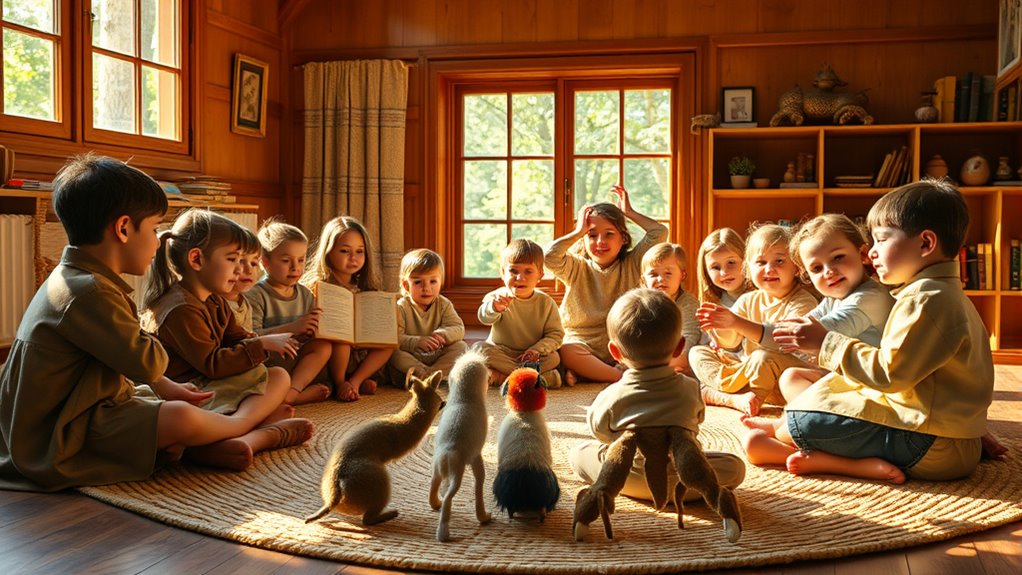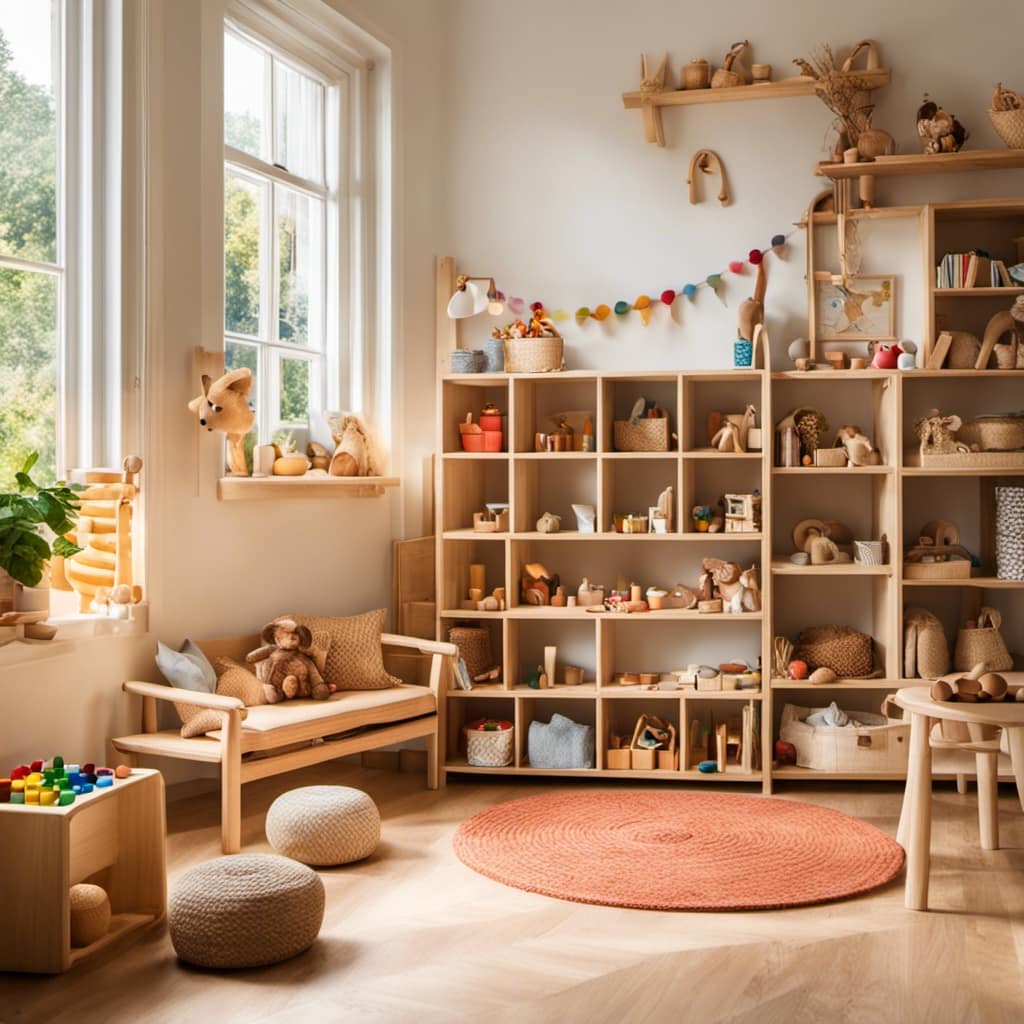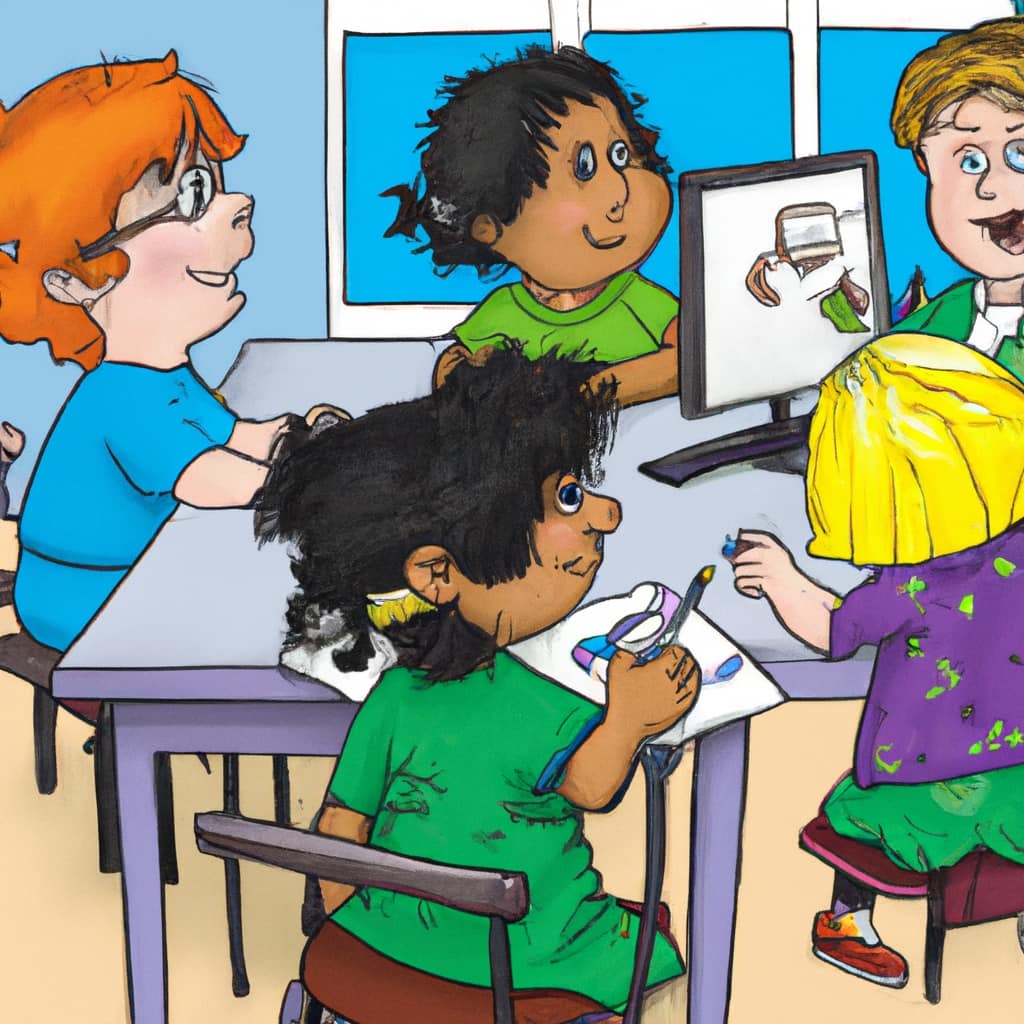In Waldorf education, storytelling and imaginative play are essential for your child’s growth. You help nurture creativity, emotional understanding, and confidence by engaging children in stories that bring characters and themes to life. Imaginative play allows your child to explore feelings, develop social skills, and build resilience in a safe space. As you continue, you’ll discover how these practices support a well-rounded development that prepares your child for future success.
Key Takeaways
- Storytelling and imaginative play foster creativity, emotional growth, and cognitive development aligned with Waldorf education principles.
- They serve as living arts that connect children to cultural traditions, moral lessons, and inspire visualization.
- Imaginative play provides safe spaces for children to explore feelings, develop resilience, and enhance social skills.
- Observation and gentle guidance support children’s emotional well-being and encourage self-expression through play.
- Overall, these practices promote confidence, curiosity, and holistic development essential for future success.

Storytelling and imaginative play are central to Waldorf education, fostering creativity and emotional development in students. When you engage children in stories and encourage them to create their own narratives, you’re nurturing their innate capacity for artistic expression. This approach recognizes that childhood development isn’t just about acquiring facts but about exploring the world through imagination, feelings, and sensory experiences. By immersing children in stories, you help them develop their ability to think creatively, empathize, and express their emotions in meaningful ways.
In Waldorf classrooms, storytelling becomes a living art that connects children to cultural traditions and moral lessons. As you tell a story, you breathe life into characters, settings, and themes, inspiring children to visualize and internalize the narrative. This active participation enhances their cognitive skills, language development, and emotional intelligence. When kids are encouraged to retell stories or invent their own, they practice artistic expression, learning to communicate their ideas with clarity and confidence. This process supports their overall childhood development, laying a foundation for future academic and social success.
Imaginative play, in this context, is more than just fun; it’s an essential part of growth. You might see children pretending to be animals, crafting imaginary worlds, or role-playing everyday scenarios. These activities allow children to process their experiences and feelings in a safe, creative space. As they transform simple objects into tools or characters, they develop fine motor skills and spatial awareness. More importantly, imaginative play fosters emotional resilience, helping children navigate complex feelings and social situations. It nurtures their sense of wonder and curiosity, which are crucial for healthy childhood development.
When you observe children engaged in imaginative play, you notice how their stories and scenarios reflect their inner worlds. By guiding or participating in their play, you can subtly introduce new ideas, values, and problem-solving skills. This kind of learning is organic, meaningful, and deeply rooted in the child’s natural inclinations. You’re not just entertaining them; you’re supporting their growth into confident, expressive individuals. The beauty of storytelling and imaginative play in Waldorf education is that it emphasizes the whole child—intellectually, emotionally, and artistically—creating a rich environment where children flourish by expressing themselves freely and exploring the depths of their imagination.
Frequently Asked Questions
How Does Storytelling Influence Emotional Development in Children?
Storytelling helps you understand your emotions and those of others, fostering emotional resilience and empathy development. When children listen to stories, they connect with characters’ feelings and experiences, learning to navigate their own emotions better. This active engagement strengthens their ability to cope with challenges and develop compassion. As you share stories, you support their emotional growth, encouraging a deeper sense of understanding and resilience that lasts a lifetime.
What Role Does Nature Play in Imaginative Play?
You realize that nature plays a crucial role in imaginative play by fueling your creativity and curiosity. When you engage in nature exploration and outdoor adventures, you naturally develop new ideas and scenarios for play. This connection helps you deepen your understanding of the world, sparks your imagination, and encourages spontaneous storytelling. The outdoors become a limitless playground where your mind can wander freely, enriching your playful experiences and emotional growth.
How Are Storytelling Techniques Adapted for Different Age Groups?
Like a chameleon changing colors, you adapt storytelling techniques to suit different age groups. For young children, you use simple, vivid stories that engage their senses, while older kids enjoy more complex narratives that challenge their thinking. Age-specific adaptations include interactive elements for younger children and richer themes for older ones, ensuring each story resonates and fosters growth. Your flexibility keeps storytelling meaningful and developmentally appropriate.
Can Storytelling Help Children With Learning Disabilities?
Storytelling benefits children with learning disabilities by engaging their imagination and improving focus. You can help them connect with the material more easily through vivid stories, making learning more accessible. By incorporating storytelling techniques, you support their emotional and cognitive development, fostering confidence. This approach encourages participation and comprehension, ultimately aiding in overcoming learning challenges. So, storytelling becomes a powerful tool to make learning more inclusive and effective for children with learning disabilities.
How Is Technology Integrated Into Waldorf Storytelling Methods?
You might be surprised to learn that only 10% of Waldorf schools fully integrate digital literacy into storytelling. Instead, they emphasize multimedia integration through nature-inspired visuals, puppets, and oral narration. This approach keeps children engaged while fostering imagination and deep understanding. Technology is used thoughtfully, not as a distraction but as a tool to enhance storytelling, ensuring kids develop digital skills without losing the magic of traditional Waldorf methods.
Conclusion
Just as the Brothers Grimm spun tales that stirred our deepest imaginations, your role in Waldorf education nurtures this ancient art. By embracing storytelling and imaginative play, you ignite a spark that fuels children’s inner worlds, guiding them to discover their unique stories. Remember, in fostering creativity, you become a modern-day bard—building bridges to a future where imagination shapes the soul, much like the timeless stories that continue to inspire generations.











